Technical Details
The life cycle of the sturgeon takes place over 7 years. The breeding will therefore have all stages of development of sturgeons namely:
- breeding stock;
- eggs and hatching;
- fry: 0-12 months;
- sturgeons longer than 12 months;
- adult mature sexually;
- sturgeons in the fasting phase before slaughter.
For the seven stages of rearing, there is approximately a maximum total biomass of 6848 kilograms of fish per year. According to the European recommendations for organic aquaculture, the maximum fish density is 30 kg / m3. In all, the 6 required basins have a floor area of 16,200m², a total volume of 48,600 m3. There is one basin per stage of sturgeon development. Fish less than one year old are found in ponds inside the building.

First pilot phase
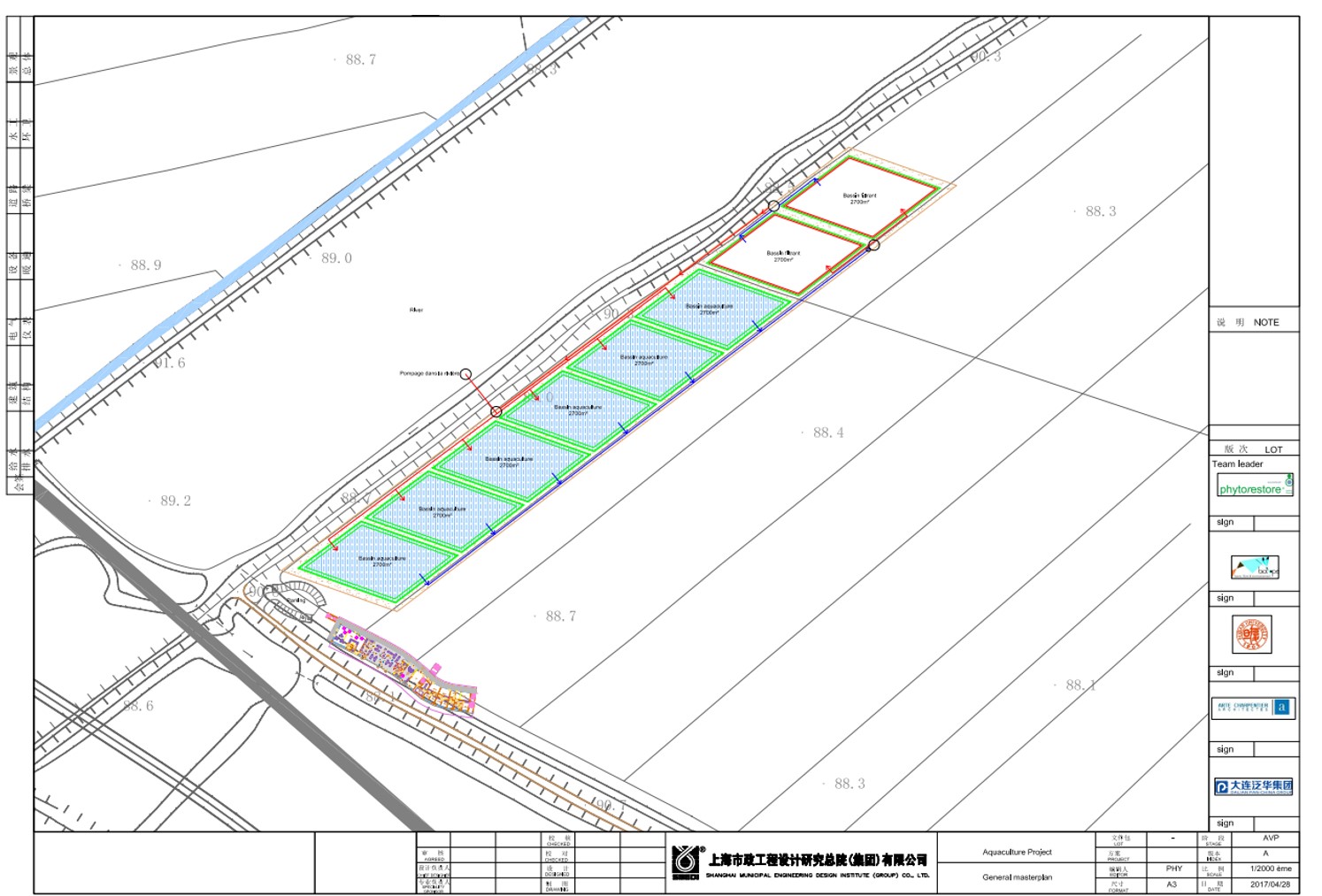
In order to filter the water downstream of the basins, it is essential to set up 2 filtering gardens, with a surface area of 2,700m² each to treat all discharges and also to preserve the ecological quality of Wolong Lake.
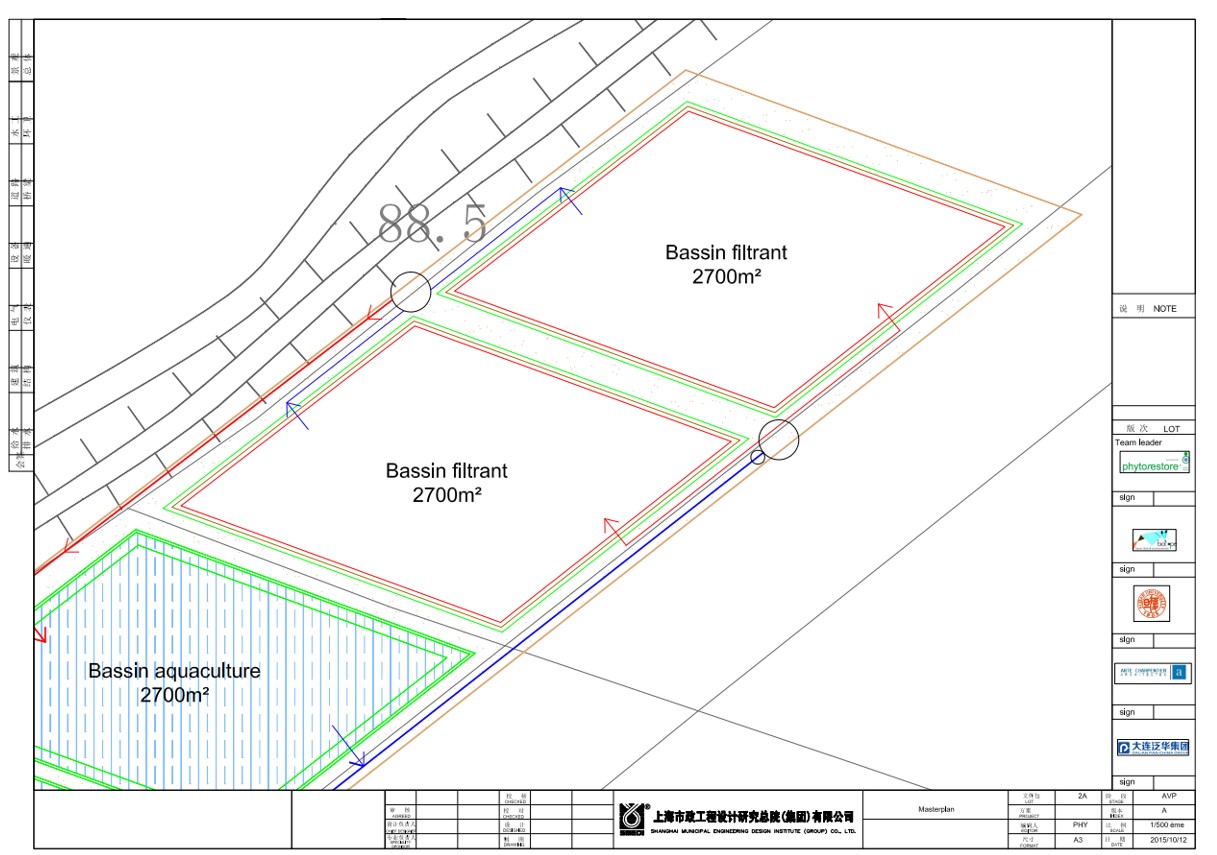
In order to be able to properly size the livestock infrastructure, it was initially decided to set the initial objectives in terms of quantity and quality of caviar.
The quantitative objective is to produce 250 kg of caviar on site or a need to slaughter 616 kg of sturgeon biomass per year. The caviar produced will be of very high quality. The quality of the caviar depends on two parameters: the species used and the preparation.
For Wolong Lake, the objective could be to produce malossol caviar, it is proposed to produce 3 types of caviar. The price of the caviar depends on the hopes used.
The beluga is the most expensive caviar in the world because it takes an average of 20 years to extract its eggs and there are officially very few on the world market. Only 300 kg of beluga circulate around the world each year. However the climate of Wolong Lake is totally suitable for this type of breeding. This is an opportunity that must absolutely be exploited and developed in Kangping.
The price of osciometry caviar and schrenkii caviar is 618 RMB for a box of 30g.
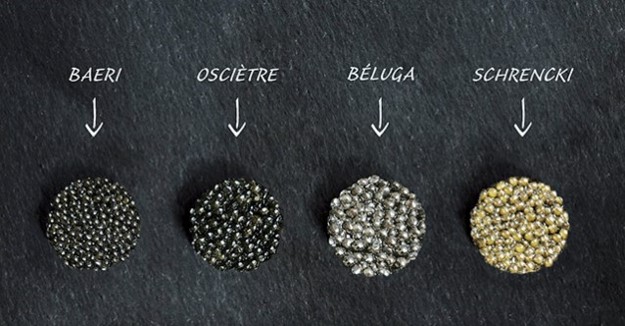
Plan of the building for organic fish farming
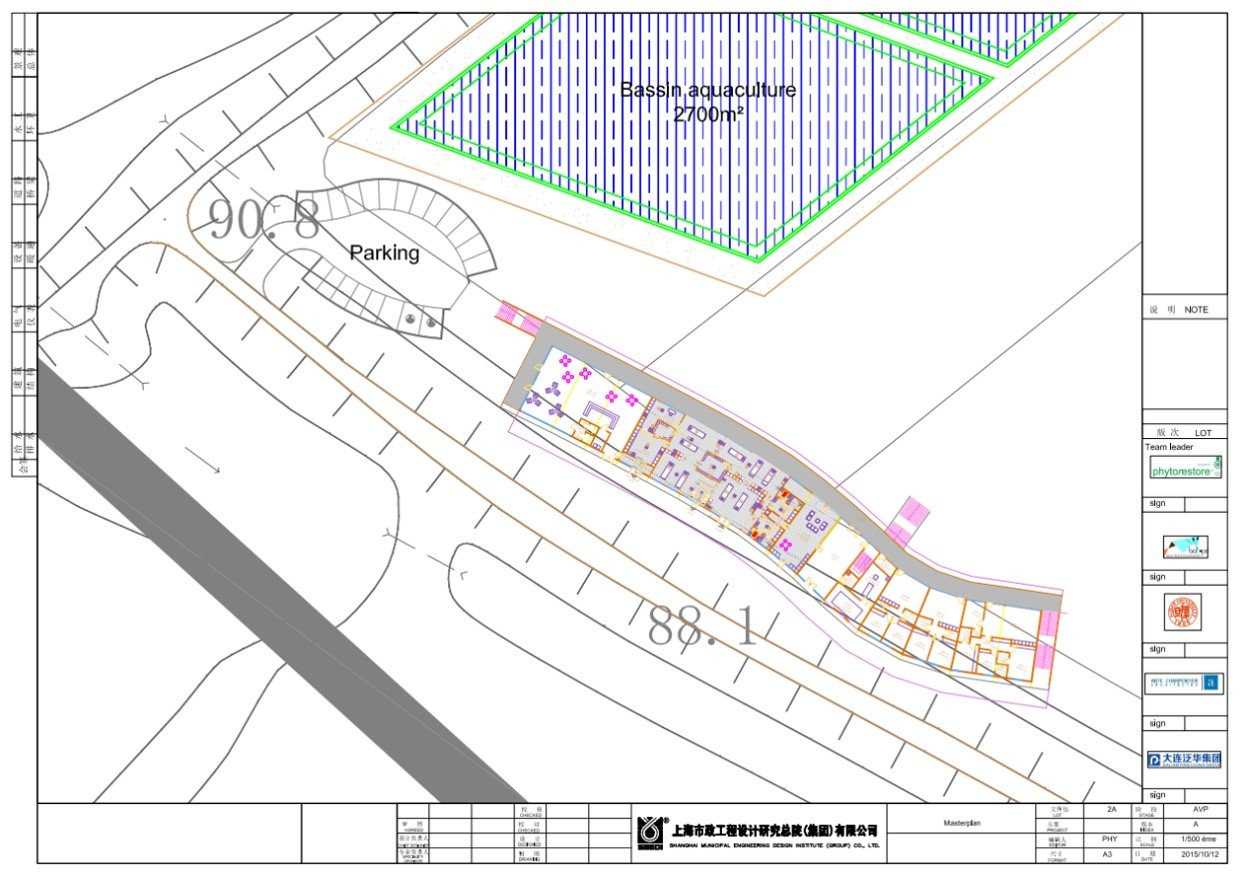
The basins will be fed from a sample in the river in a preferential manner. When this is not possible, it is possible to operate in a firm circuit with a slight supply from the lake after treatment by the filtering gardens. Only part of the water is used punctually because the system operates at 80% closed circuit. The water will be diverted from the river, then a feed channel will bring water to the basins. A dam ensures a constant water level in the feed channel. For this project, the ponds are arranged in parallel: each pool has an individual water intake on the feed channel and each pool can be filled and emptied independently of the others. Below is a schematic representation of the basins in parallel:The basins will be fed from a sample in the river in a preferential manner. When this is not possible, it is possible to operate in a firm circuit with a slight supply from the lake after treatment by the filtering gardens. Only part of the water is used punctually because the system operates at 80% closed circuit. The water will be diverted from the river, then a feed channel will bring water to the basins. A dam ensures a constant water level in the feed channel. For this project, the ponds are arranged in parallel: each pool has an individual water intake on the feed channel and each pool can be filled and emptied independently of the others. Below is a schematic representation of the basins in parallel:
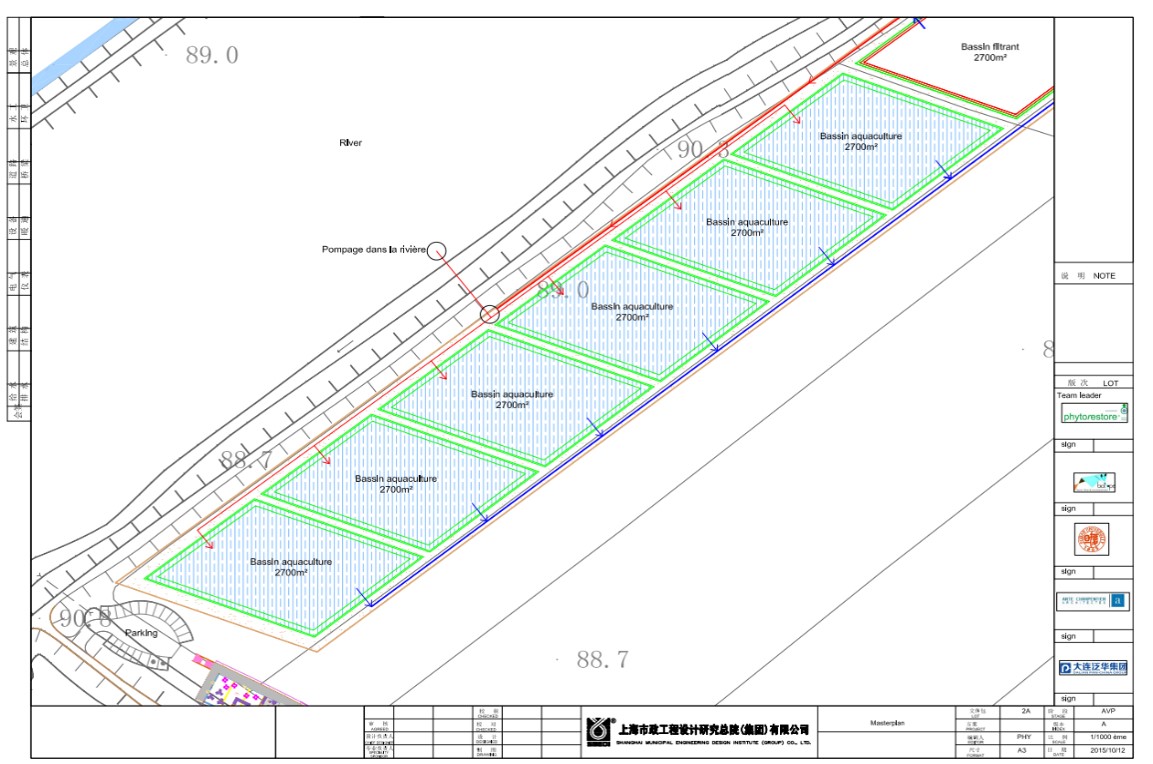

Examples of aquaculture systems

